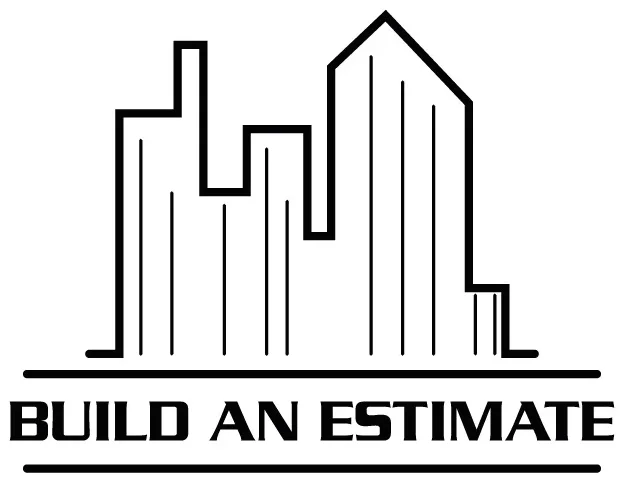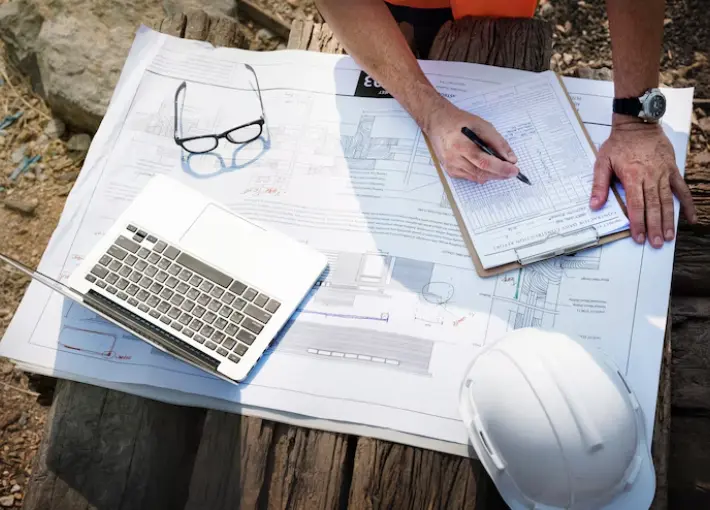- HOME
- SERVICES
- OUR TRADES
- SAMPLES
- Build An Estimate – Accurate Cost Estimating
- CONTACT
- Home
- Services
- Our Trades
- Samples
- Pricing
- Blog
- About Us
- Contact
- HOME
- SERVICES
- OUR TRADES
- SAMPLES
- Build An Estimate – Accurate Cost Estimating
- CONTACT
- Home
- Services
- Our Trades
- Samples
- Pricing
- Blog
- About Us
- Contact

Streamlining Your Projects with Construction Cost Estimating Services in 2024
March 12, 2024
How to Bid Construction Jobs Successfully in 2024
June 14, 2024How to Improve Accuracy with Estimating Methods in Construction – Trends for 2024

Are you frustrated that your construction projects deal with missed deadlines and cost overruns due to inaccurate estimation? Do you ever feel frustrated with your ability to precisely estimate costs and deadlines that confuse you and your clients? Similarly, if yes, you are not the only one. Estimation in construction is not always easy for anyone, but by employing good approaches and techniques, you can increase accuracy and manage projects’ statuses.
In this article, we will explore estimating methods in construction and provide you with practical knowledge and skills to improve your estimates. Whether you are a pro contractor or a beginner in this field, this article will empower you with the techniques and formulas needed to reduce your estimate rework to the minimum and increase your chances of being a successful contractor.
Therefore, if you are ready to say goodbye to measurement mishaps and welcome modern techniques of construction management, then keep reading to learn how to resolve your problem.
Table Of Content
Method for the Estimating In Construction
In construction, estimation is foreseeing the expenditures and resources needed to complete a project. Different estimating methods in construction are commonly used in the calculation process:
Analogous Estimating:
The analog comparison in estimating requires the use of historical data from projects resembling the present project in the estimation of the current project costs. The method is a quick-light process ideal at the initial stages of a project when specific data are not yet available.
Parametric Estimating:
The parametric estimation method is applied by employing the mathematical models and model parameters to derive the cost of different elements associated with the project. The approach is highly precise in digital estimation since it is more meticulous than the analogous quantitative method. This method is used for projects with clear parameters.
Bottom-Up Estimating:
Bottom-up estimating methods in construction entail breaking down the project costs of individual components and summing them up to the total of the whole project. This method may be time-consuming but is also viable, detailed, and accurate.
Three-Point Estimating:
Using the three-point estimating methods in construction required taking an optimistic, pessimistic, and most likely estimate and averaging them against each other. This method involves scanning the project hurdles and risks, considering risks and uncertainties.
Vendor Bid Analysis:
The next stage of the process is the supplier or subcontractor bids analysis for the equipment or materials required. This value is then used to estimate the production costs for each component. By implementing the said model, the buyers are, at best, being helped by real-world prices, but they need to put in sufficient effort to analyze and negotiate correctly.
Each estimate method has strengths and flaws, which depend on criteria such as the project complexity, available data and the project’s current stage. You will learn about these methods and decide on the best one for your project to increase the precision of your estimates and, therefore, make your projects successful.
Identifying the Essentials of Accurate Estimating In Construction
When we start exploring the specific methods and techniques that help us attain accuracy in construction estimating, it is important to discuss why accuracy is a critical factor briefly.
Cost Control:
Accuracy of estimates helps build a zero-defect cost control policy for construction projects. For instance, it is possible to forecast materials and time accurately; thus, in the end, projects do not exceed the budget.
Schedule Management:
Not only is it essential to predict the final costs, but it is also important to determine the project’s schedule. Those working on construction projects can carry out a realistic schedule based on an accurate estimation of the time needed for each project phase and minimize delays.
Client Satisfaction:
Much worse than having unscheduled delays and excessive budget requests are delays. Accurate estimation of price brackets gives a client confidence, which is a virtue and plays an effective role in a customer’s trust. Thus, It results in higher client satisfaction and second-time repeat business.
Steps to improve accuracy in construction projects
Now that we realize the essence of tracking accuracy in construction let us delve into the steps you can take to improve precision in your construction projects.
Step 1: Applying Historical Data
The historical data from past projects, available now, is one of the most effective ways of improving estimating methods in construction accuracy. Examining relevant precedents of similar projects by function, you can learn about quantities such as material costs, labor productivity and project duration.
Here’s how to utilize historical data effectively:
Compile Data: Collect data from implemented projects, including plans, spending, and real budgets.
Analyze Trends: Find tendencies and peculiarities in data sets to get an understanding of which factors influence the shortening of the deadlines and expenses;
Adjust for Inflation: Apply inflation and market condition variability when making a historical data-reliant price estimation for the current conditions.
Refine Estimates: Use historical data to modify your estimates, thus making them more precise through the preceding check performance.
By automatically including historical data as an estimating services process component, you greatly increase the likelihood of making the right decisions and avoid costly errors.
Step 2: Embrace Technology
In the age of digital technology, contractors and construction professionals can now use a much larger range of software and handy tools to speed up the estimation process and ensure the accuracy of their estimates.
Other than estimating software, Building Information Modeling (BIM) technology is also among those technologies that can help you redefine the world of construction estimating.
Here are some ways technology can enhance accuracy in construction estimating:
Estimating Software: Software used for these computations should be chosen, and cost estimates for materials, labor, and overhead should be given.
BIM Technology: To create BIM models of the different levels of your work, take advantage of the BIM technology that will make it possible for you to visualize the whole construction process and even learn about any issues that may arise in advance long before the construction process begins.
Mobile Apps: Utilize mobile phone apps that enable you to get in touch with the project data and cooperate with other team members no matter where you are; thus, all members are equipped with the most recent data.
Technology, among other things, aptly addresses such needs: it helps in the clear computation of costs, allows for fewer input errors, and generally gives higher estimates that other means cannot emulate.
Step 3: Collaborate Effectively
Effective communication is the secret to exact estimating in construction projects as well. By engaging all the stakeholders, that is, the architects, the engineers, the subcontractors, and the suppliers, you can establish that each has a clear idea about the project requirements and limitations.
Here’s how to collaborate effectively during the estimating process:
Communicate Clearly: Overly express the tasks and all associated intricacies, such as timeframes and budget limits, to all constituents to allow for the same vision.
Seek Input: Ask architects, engineers, and subcontractors for feedback while making estimates to address possible impediments and propose accurate solutions promptly.
Use Cloud-Based Platforms: Leverage the cloud’s collaborative sharing capabilities, like employing cloud-based platforms to share project documents and collaborate in real-time, regardless of the location.
Regular Updates: Do not forget to define regular updates on the estimating process for all stakeholders to improve information delivery and keep everyone involved and concentrated.
The best way to achieve this is to build a culture of togetherness and collaboration. That’s where you can make good use of the team’s expertise to improve the accuracy of your estimates.
Step 4: Conduct a Comprehensive Site Analysis
A comprehensive site analysis is the basis for exact estimating in construction projects. You can point out possible risks and opportunities by analyzing site conditions, environmental factors, and technical factors that impact project expenditures and deadlines.
Here’s how to conduct a detailed site analysis:
Visit the Site: Visit the project site to make an onsite assessment highlighting the condition of the site, including its topography and accessibility.
Gather Data: Collect onsite information about soil conditions, utilities, and environmental measures that will impact development processes.
Consider Logistics: Analyze logistical challenges like site accessibility, material delivery, and waste removal, which may lead to a slowdown and increased costs.
Factor in Site-Specific Risks: Determine site-specific risks, for example, weather conditions, local laws, and safety hazards, to prevent their disturbing the project implementation
By going into the details of the site analysis, you can proactively avoid possible challenges and ensure that your estimates are genuine.
Step 5: Go Over and Wipe Off
Last, the estimation planning process must be reviewed and improved periodically using the actual data during the implementation to ensure precision along the operation. Construction projects are dynamic and might be subject to change. Therefore, it’s all the way necessary to revisit your estimates on a regular base and make adjustments whenever necessary.
Here’s how to review and refine your estimates: Here’s how to review and refine your estimates:
Monitor Progress: Monitor the work’s progress against the budget you set initially to acknowledge deviations and variances.
Update Estimates: Regularly upgrade your forecasting per the project performance and any changes in the scope and market conditions.
Learn from Experience: Know what past projects have taught you and incorporate some of the feedback to make the future estimation more precise.
Communicate Changes: Keep all parties informed why the estimates were changed and repaired and what the reasons were to remain transparent and trusted.
Conclusion
Accuracy is basic for the success of estimating methods in construction projects; hence, it is a need, not a burden. Using historical data, integrating technology, working closely, doing detailed site analyses, and continuously monitoring and improving your estimates with this approach makes it possible to improve accuracy while improving the project management process.
Therefore, if you’re willing to say goodbye to estimations worries and take your construction projects to a higher level, employ the steps in this guide and, ultimately, watch as your projects improve cost-effectiveness, efficiency, and success.
Frequently Asked Questions (FAQs)
Q: What makes the right estimation vital in construction projects?
A: Accurate estimating methods in construction are ultimate in construction, and if it is not done properly, the project can lose its focus on cost control, effective schedule management and good customer satisfaction. Such assessments have a broad favorable effect on projects in the form of decreased budget expenditure, expiration date, and the goodwill of stakeholders.
Q: What do collaboration and coordination contribute to assessing precisely the result?
A: Collaboration is the key to making accurate estimations in two aspects: first, all stakeholders will be able to contribute their expertise and knowledge, and second, there will be a greater chance of making realistic and more comprehensive estimates. Effective communication and teamwork are the superior skill sets that facilitate the creation of decisions and solving problems that occur in a demanding time.
Q: How will I keep my estimates steady and accurate during construction?
A: To be sure that the estimations are still up-to-date during the progress of projects, it is highly recommended to often review and revise the estimations based on real results, changes in scope, and market conditions. Communicate updates about the project to everyone involved to foster trust and allow for an aligned view.
Q: Do we need to conduct a comprehensive site analysis to make a precise estimate?
A: Yes, a thorough site analysis is what ensures that the estimate is done correctly because it helps you see any risks, chances, and concerns that may delay the project or affect the costs. You are in a position to understand the site-specific issues more and make more informed, site-specific and, hence, accurate decisions.






